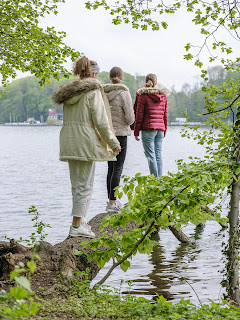the X100F - after one week of use
Time to share my further experiences with Fuji's new model of the X100 family with you. As I wrote in my last X100F article I was coming from the older X100S and the changes for me were huge in terms of the auto-focus, the sensor and the overall speed.
After one week of taking this camera to different places I want to show you some images and share my views about the changes Fuji made in the product line.
 |
| a lung-bun (Lungenbrötchen) as we say in Germany |
Auto-focus and EVF/OVF
If you're coming from the X100S you will notice the difference, because the auto-focus was really bad back in the early days of this product line but I managed to deal with this flaw. Now it feels fast enough, more accurate and serves my needs as a documentary and street photographer very well. There are faster systems out on the market but this is not the aim of this camera. Most of the time the auto-focus delivered just the way I expected it, even in OVF-mode.
EVF is bliss! It is fast with a high refresh rate as I know from my XPRO2. It stays that way even in low light situations without becoming a porridge of pixels.
The OVF is also more detailed now and can show a tiny fraction of the auto-focus-area in the lower right (nothing new for the X100T users). I am a heavy OVF user, because I love the distraction free experience and the possibility to see what is coming into the frame (because the visible area is greater through the OVF). I love the way Fuji stays to it's fundamental principles by having unique products which standout to the whole camera-manufacturer landscape out there. You hate it or you love it, but it's a distinctive Fuji.
 |
| passing the bridge |
Any negative points after a week of use?
Sounds a bit simple but except the misplacement of the "Q-button" there is nothing to talk about for me. The ISO-dial can be skipped to the front dial and the missing weather resistance is not a real deal-breaker for me (it wasn't a problem before), I can use my XPRO2 in such occasions with a WR lens like the Fujinon 35 f2. BTW: Even the Leica M10 is not weather resistant. Some light raindrops wouldn't break the camera and you can use special plastic bags to cover the camera in such occasions.
Conclusion
After a week of use there was nothing really bothering me. The camera is a pure joy in the hands of a photographer who likes to set all important parameters with dials and wants to look through a hole rangefinder style. The whole body feels solid like a rock and the fast electronic viewfinder makes it feel less digital with less in between the subject and the eye. Fuji is marching on a evolutionary road with products that change slightly from model to model. I hope that Fuji stays with their Kaizen philosophy because of the many models of the past. I think they shouldn't forget the customers using an XT1 or X100S when it comes to firmware updates etc.
I can recommend this camera with no doubt and suggest everyone who is planning to buy one to go to a local shop and test it. Don't buy cameras via online stores without testing them and don't forget to support your local dealer.
Cheers,
Nils
PS: A mini rant goes out to Adobe for not updating the raw support in Lightroom. The file format (and sensor) is the same as in the XRO2 or XT1 so it is just a tiny variable to set. I think that Adobe is losing followers with that kind of product-support.






Comments
Post a Comment